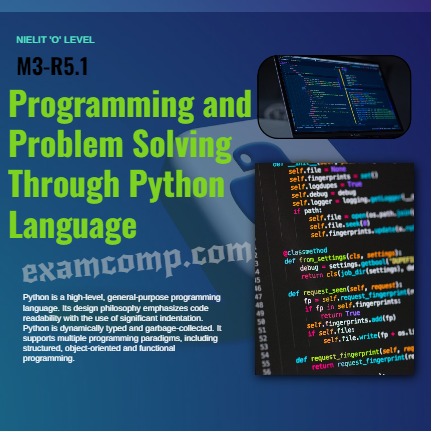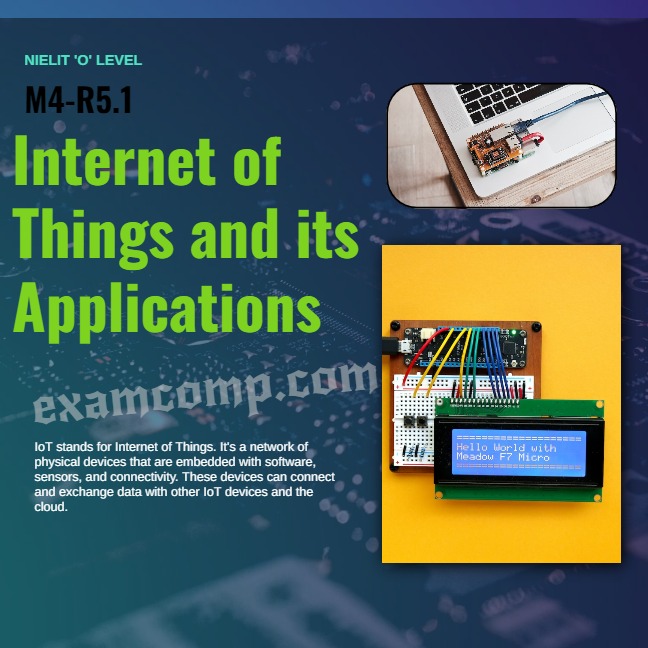O LEVEL EXAM
Are you thinking of doing O level Course! ( Diploma )
Things that you should know:
O level Exam are conduct by NIELIT ( National Institute of Electronics and Information Technology ), is an autonomous scientific society of the Ministry of Electronics & Information Technology, Government of India.
NIELIT conduct many course but major course are given below:
- ‘O’ Level –NSQF aligned course at Level 4
- ‘A’ Level -NSQF aligned course at Level 5
- ‘B’ Level - NSQF aligned course at Level 7
- ‘C’ Level - NSQF aligned course at Level 8
- BCC (Basic Computer Course)
- CCC (Course on Computer Concept) –NSQF aligned at Level 3
Digital Literacy Courses
Structure of NIELIT ‘O’ Level Course
The revised syllabus (Revision 5.1) of ‘O’ Level (IT) course consists of four compulsory theory modules, four practical and one project. The structure of the ‘O’ Level (IT) syllabus is indicated below:
| Module Code | Module/ Subject | Marks (Theory + Practical) | Practical |
| M1-R5.1 | Information Technology Tools and Network Basics | 200 (100 TH + 100 PR ) | 1 |
| M2-R5.1 | Web Designing & Publishing | 200 (100 TH + 100 PR ) | 1 |
| M3-R5.1 | Programming and Problem Solving through Python | 200 (100 TH + 100 PR ) | 1 |
| M4-R5.1 | Internet of Things and its Application | 200 (100 TH + 100 PR ) | 1 |
After that you have to submit your project which is your choice any of subject ( Example : website , python program , IOT project on arduino etc.).
Eligibility Criteria :
12th
Or
ITI Certificate (Two Years) after class 10
Or
ITI Certificate (One Years) after class 10 with one year of experience post qualification.
Or
Successful completion of the second year of a Government recognized polytechnic
engineering diploma course after class 10, Training of ‘O’ Level course concurrently
during the third year of the said 3 years Polytechnic engineering diploma course.
The certificate of ‘O’ level will be awarded only after successful completion of the
polytechnic engineering diploma.
Syllabus :
- Information Technology Tools and Network Basics
- Introduction to Computer
- Introduction to Operating System
- Word Processing (Libre Office )
- Spreadsheet ( Libre calc )
- Presentation ( Libre Impress )
- Introduction to Internet and WWW
- E-mail, Social Networking and e-Governance Services
- Digital Financial Tools and Application
- Overview of Futureskills and Cyber Security
- Syllabus of Web Designing and Publishing (M2-R5.1)
- Introduction to Web Design
- Editor
- HTML Basic
- CSS ( Cascading Style Sheet )
- CSS Framework
- JavaScript and Angular JS
- Photo Editor
- Web Publishing and Browsing
- Syllabus of Programming and Problem Solving Through Python Language (M3-R5.1)
- Introduction to Programming
- Algorithm and Flowcharts to solve problems
- Operators, Expressions and Python Statements
- Sequence datatypes
- Functions
- File Processing
- Modules
- NumPy Basics
- Syllabus of Internet of Things and its Applications (M4-R5.1)
- Introduction to IoT –Applications/Devices, ProtocolsandCommunication Model
- Things and Connections
- Sensors, Actuators and Microcontrollers
- Building IoT Applications
- Security and Future of IoT Ecosystem
- Soft skills-Personality Development
Passing Marks :
For pass in exam you need to get minimum 60 % in theory and in practical you need 40%. If you get 80% in theory and 10-20% in practical, then you failed and vice-versa. Minimum Pass Percentage is 50% of total weightage (Theory + Practical). If you fail, you re-attempt that paper next time.



